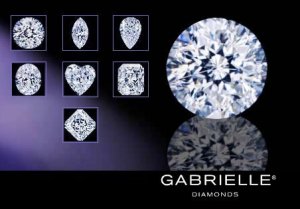lil_jay78
Shiny_Rock
- Joined
- Mar 15, 2006
- Messages
- 195
Hi guys...long time no see...
I''ve been on hiatus as work has been crazy lately and I''ve been working on my proposal plans for my gf.
Anyway, I was strolling around westwood last week and walked into Sarah Leonard, where they had several Gabrielle Cuts on display. Of course I had to display my PS knowledge and began asking about the diamond. This is the first time I''ve actually seen a Gabrielle Cut, and the saleslady informed me they are an exclusive dealer for Gabby cuts.
I also found out that these stones currently do not have any GIA or AGS certs, which makes sense to me, considering they are pretty new(right?). Anyway, the sales lady was very impressed w/ the type of questions I was asking and asked if I was a jeweler, and I said, i was just a "fan" of diamonds.
Anyway, the Gabrielle Cut really looks like a nice diamond, but there is little to no information about them so far...so any 411 you guys can give would be awesome. I''d like to see what you guys think.
btw - I''m about to post pics of my ring on SMTR...
I''ve been on hiatus as work has been crazy lately and I''ve been working on my proposal plans for my gf.
Anyway, I was strolling around westwood last week and walked into Sarah Leonard, where they had several Gabrielle Cuts on display. Of course I had to display my PS knowledge and began asking about the diamond. This is the first time I''ve actually seen a Gabrielle Cut, and the saleslady informed me they are an exclusive dealer for Gabby cuts.
I also found out that these stones currently do not have any GIA or AGS certs, which makes sense to me, considering they are pretty new(right?). Anyway, the sales lady was very impressed w/ the type of questions I was asking and asked if I was a jeweler, and I said, i was just a "fan" of diamonds.
Anyway, the Gabrielle Cut really looks like a nice diamond, but there is little to no information about them so far...so any 411 you guys can give would be awesome. I''d like to see what you guys think.
btw - I''m about to post pics of my ring on SMTR...














300x240.png)